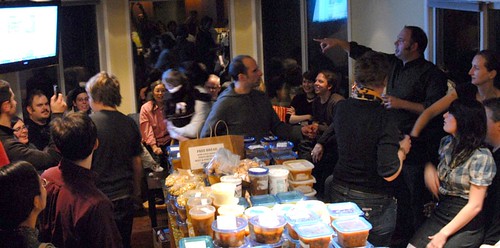Tomorrow I’ll be the guest of Heike Philip (in Germany) along with Jay Cross and Ken Thompson for an online roundtable on virtual learning, informal learning and virtual teams. We’ll mix it up, I’m sure. It is part of a larger day of activities that are F2F and online in GERMAN in the morning, German time, and in English in the afternoon, German time (early morning for us on the US West coast). Join us!
| |||||||||||||||||||||||||||||
Meeting Point @ LearnTec 2009
4:30pm Virtual Collaboration Moderation Heike Philp
Introduction with Lutz Berger, free journalist 2.0, Science&Faction
Virtual Round Table – Panel Discussion
| 4:30pm (GMT +!) | Virtual Collaboration Moderation Heike Philp Introduction with Lutz Berger, free journalist 2.0, Science&Faction Virtual Round Table – Panel Discussion Jay Cross, author of the book ‘Informal Learning’, Nancy White, consultant for communities of practise and Ken Thompson, virtual team expert and author of the ‘Bioteaming Manifesto’, meet live online to discuss strengths and opportunities as well as weaknesses and threats for virtual teams. This is an unusual and an explosive mixture of experts and trendsetters who have been doing the ground work of connecting people. We are looking forward to hearing their views on the ‘next 5000 days’ of the Internet, an Internet that appa rently took 5000 days to reach the same amount of connections than our brain has todate. Heike Philp will be moderating the discussion and invites all present, namely all ‘virtual’ and all ‘local’ participants to testdrive virtual collaboration and to freely share ideas. |

 I live in a place that is cold, dark and wet in the winter, something that can only be assuaged by good friends, more chocolate and soup. I am thinking about making split pea soup this very minute but instead, I was doing some blog reading catch up on Nerd’s Eye View – a Seattle blogger – and saw her post on a
I live in a place that is cold, dark and wet in the winter, something that can only be assuaged by good friends, more chocolate and soup. I am thinking about making split pea soup this very minute but instead, I was doing some blog reading catch up on Nerd’s Eye View – a Seattle blogger – and saw her post on a 